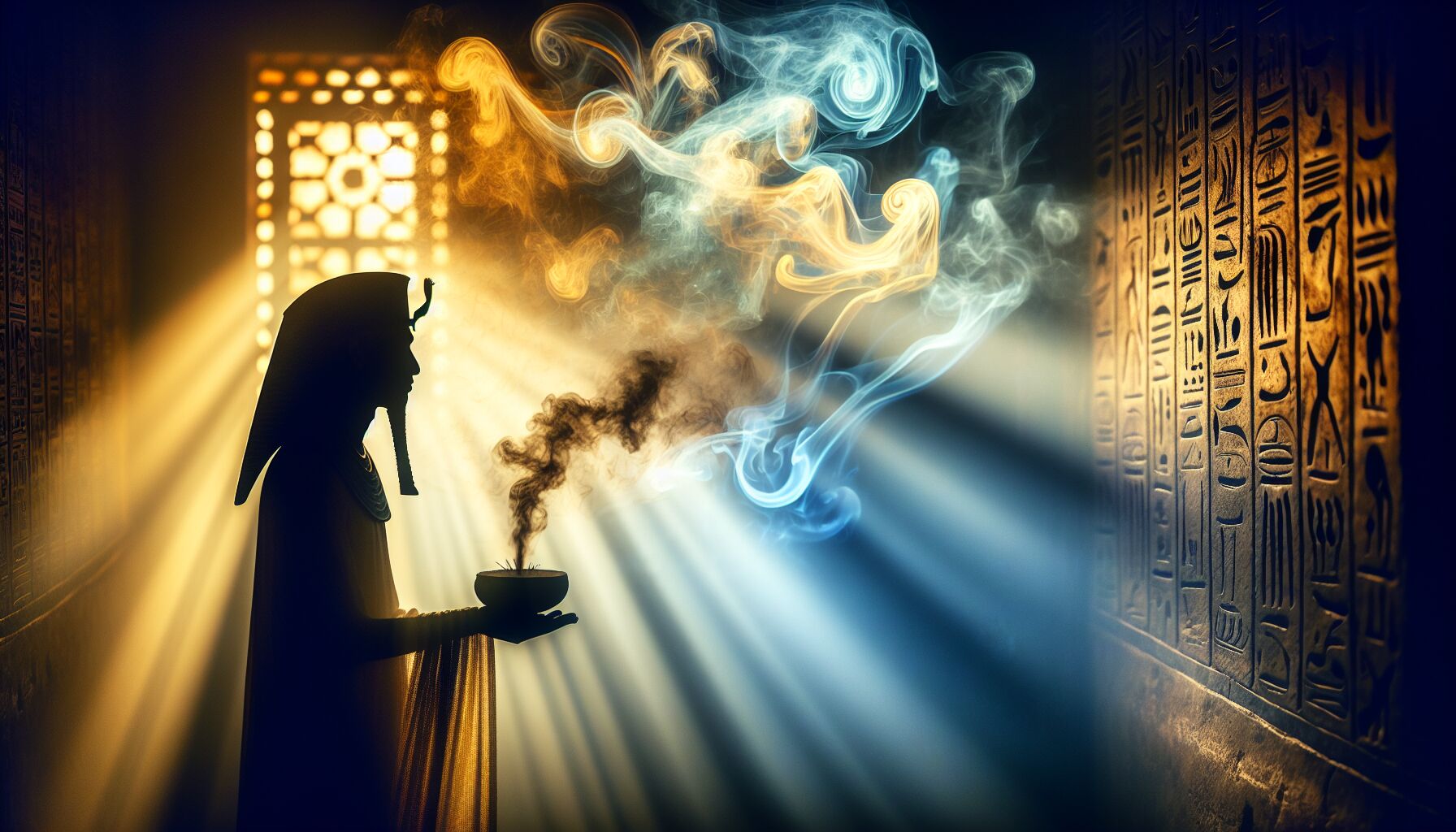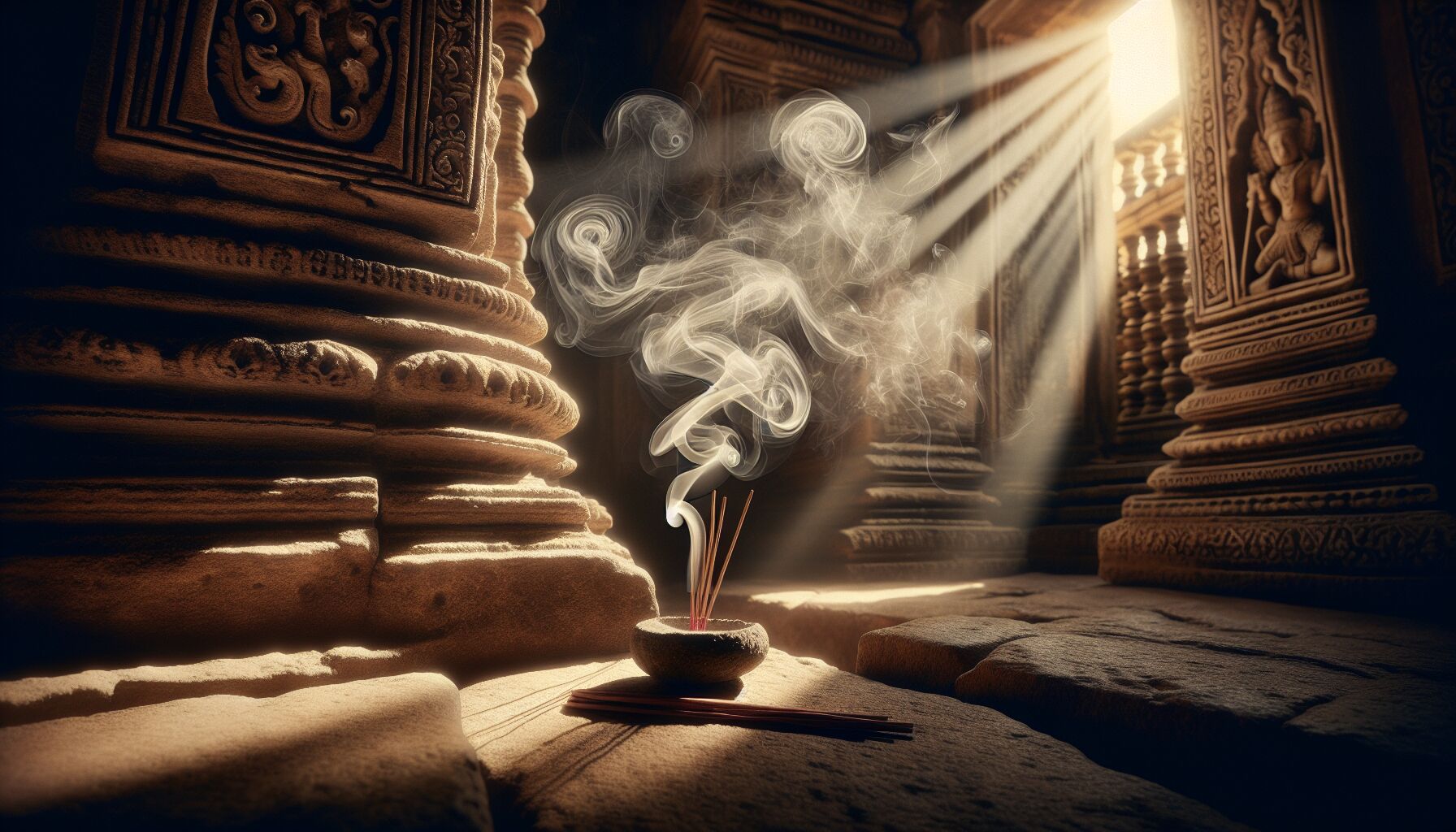 Understanding the historical origins of herbal incense gifts us a window into the ancient ways in which our ancestors connected to the divine. If you think about it, the use of aromatic smoke carries stories of a past deeply intertwined with nature and spirituality. It wasn’t just about fragrance; it was about a practice that elevated the soul and purified spaces.
Understanding the historical origins of herbal incense gifts us a window into the ancient ways in which our ancestors connected to the divine. If you think about it, the use of aromatic smoke carries stories of a past deeply intertwined with nature and spirituality. It wasn’t just about fragrance; it was about a practice that elevated the soul and purified spaces.
Now, in the temples of bygone eras, priests and shamans burned herbs not merely for their aromatic allure but for the role they played in sacred rituals. These temple rituals were more than ceremonies; they were communions with the spiritual realm. Often, the rituals included offerings to deities, and herbal incense transformed that space into a sacred haven where the divine could be honored and worshipped. The smoke curling upwards served as a bridge, a messenger between the earthly and the divine.
Let’s set the scene: picture ancient Egypt, where priests utilized the rich scent of kyphi and other blends to create an atmosphere worthy of gods. It wasn’t uncommon for the Egyptian Book of the Dead to suggest that incense itself held the breath of the gods and facilitated communication with them. The smoke wasn’t simply for sensory pleasure; it symbolized a connection, an invitation to divine energies.
Jump to the east, and you’d find the spread of these practices into ancient China and India. The Chinese believed incense purified and sanctified the air, while in India, Vedic rituals frequently employed incense as an offering—a tradition still alive in temples today. In these rituals, the flames consuming the incense were akin to purifying flames of devotion, elevating both the atmosphere and the participants’ consciousness.
Noted author and philosopher Khalil Gibran encapsulated the essence of incense’s purpose beautifully:
“For what is it to breathe, but to fill the air with thine own sweetness?”
His words remind us that much like our breath, incense transforms simple air into something sacred, something new.
Even in the intricate world of science, we see how some natural herbs, like frankincense, have been recognized for their tranquil properties. Research indicates that the smoke of frankincense activates ion channels in the brain, thus reducing anxiety or depression. You might find this fascinating: even our neurons respond to this ancient purification.
Herbal incense, therefore, while wrapped in the mist of mysticism, holds a functional part in history, mirroring the broader human quest for purification and connection. This age-old tradition wasn’t just born out of necessity but from an innate desire to understand our place in the universe. Who would’ve thought a little smoke could carry such weight?
preparation and significance of incense blends
In the alchemy of creating incense blends, there’s a beautiful fusion of craft and intuition. The preparation of these aromatic treasures is akin to cooking—a bit of a dance between science and art. You begin with a blend of botanicals like frankincense, myrrh, and sandalwood, each carefully chosen for its distinct aromatic properties and spiritual significance. It’s much more than a simple mixing; it’s about understanding how each herb or resin interacts with another. Like a skilled chef balancing flavors, the incense maker combines these elements to weave a tapestry of scent that serves a specific purpose.
Herbal incense is not just a fragrance but a vessel carrying intention. Each component adds its voice to the symphony of smoke, which carries a deep message into the ether. Consider the soothing effect of lavender or the invigorating spice of cinnamon—each plays its part in cultivating an atmosphere conducive to meditation, prayer, or temple rituals. Have you ever walked into a space where the air felt electric with possibility? That’s the power of a well-crafted incense blend at work.
The significance of these blends goes beyond their sensory appeal. They serve a sacred function by purifying the air, a practice deeply rooted in ancient customs. This purification is a physical and spiritual cleansing; it’s like sweeping a room clean and inviting purity itself to reside there. Incense helps prepare the space and the spirit for communion, making the ordinary moment rich with the possibility of transformation. This practice, present in rituals across cultures, invites us to consider: What energy do we wish to bring into our spaces?
When preparing incense blends, some artisans still embrace traditional methods, grinding and mixing by hand. The tactile nature of this craft keeps them connected to the ancestors who carried out these same actions, imbuing each piece of incense with generations of reverence. It’s heartening to think that in touching the ingredients, they also touch history. Traditional wisdom becomes palpable—a whisper of past knowledge woven into each line of smoke. And you know what? Even the simplest blend has the potential to unlock the door to the sacred.
Vedic rituals, Shinto ceremonies, and even Christian liturgies see value in this sensory engagement, accentuating the experiential nature of faith. The use of herbal incense becomes a conversation with the divine, each puff of smoke a word in an ancient language. It’s about setting intentions and opening paths between the earthly and celestial. Through these blends, we don’t just witness a scent-filled air; we become co-creators in the ritualistic unraveling of time.
In today’s mindful practices, we can learn from these ancient traditions. Using incense thoughtfully in our daily routines—whether in meditation or creating a tranquil home environment—can foster a deeper connection with our surroundings and with ourselves. It’s more than a ritual; it’s a reminder of the sacredness infused in everyday life. So, light that incense stick or cone, watch the smoke dance, and allow the ancient whispers to enter your moment. How will your own story interlace with the aroma in the air?
the role of incense in religious ceremonies
 Herbal incense plays a pivotal role in religious ceremonies across the globe, its smoke acting as a sacred bridge between the tangible world and the divine. Imagine stepping into an ancient temple, where the air hums with expectation, and the dance of incense smoke creates an atmosphere of reverence. It’s almost as if each wisp and tendril of smoke carries prayers and intentions upwards—a poignant release into the universe.
Herbal incense plays a pivotal role in religious ceremonies across the globe, its smoke acting as a sacred bridge between the tangible world and the divine. Imagine stepping into an ancient temple, where the air hums with expectation, and the dance of incense smoke creates an atmosphere of reverence. It’s almost as if each wisp and tendril of smoke carries prayers and intentions upwards—a poignant release into the universe.
Consider the fragrant offerings burned as part of Hindu temple rituals. Each herb and resin carries its own story, chosen for symbolizing elements of creation, devotion, or even celestial bodies. For instance, burning sandalwood is more than an aromatic experience; it symbolizes both purification and the presence of the Divine. When attendees inhale this sacred aroma, they’re not just witnesses but participants in a divine conversation. It begs the question: How can something as simple as a smoke-filled air transform the ordinary into the holy?
Over in the sacred halls of Catholic cathedrals, incense continues to weave its magic into mass ceremonies. Plumes of frankincense rise, reminiscent of ancient days, serving as a visual metaphor for collective prayers lifting towards higher realms. It’s as if the church itself takes a breath, filled with the fragrance of centuries-old tradition, creating a continuity that binds present worshipers to their ancestors. This sense of lineage makes ceremony more than just a routine, elevating it to a heartfelt ritual steeped in history and prayer.
In the serene quarters of Buddhist practices, incense ignites a moment of mindfulness. Here, the act of lighting it isn’t merely ceremonial; it’s an exercise in presence, a meditative event. Each inhale and exhale becomes synchronized with the curling smoke, ushering practitioners into a tranquil, centered state. The idea isn’t just to purify the air but to cleanse the spirit, creating an inner temple of clarity and intention. And isn’t that a practice worth considering—purifying not just the space around us but the mind within us?
Let’s not forget the indigenous traditions where incense plants are cherished in cultural rituals. Sage, for example, is widely used in Native American purification ceremonies. The act of smudging—burning the sage to cleanse a person, space, or object—serves as a protective and purifying practice, a sacred reset button of sorts. This humble dance of smoke clears spiritual clutter and promotes healing, serving as a grounding tool in both personal and communal ceremonies.
Even in contemporary holistic settings, the practice continues to morph and adapt. From yoga studios to personal meditation spaces, the essence of incense infuses tranquility into modern lifestyles. Whether it’s a yoga session imbued with the scent of nag champa or a quiet meditation enhanced with palo santo, herbal incense continues to remind us of our connection with the sacred and the cyclic nature of life and ritual.
In the rhythmic unfolding of incense use across traditions, we find a common thread—a universal language of devotion, purification, and transformation. Perhaps as we align ourselves with these ancient practices, we’re also breathing life into our own sacred narratives. So, as you let the cleansing smoke envelop your own surroundings, consider: What whispers of the past are carried in your incense-infused air?
 DS Haven In Light Of Things
DS Haven In Light Of Things






